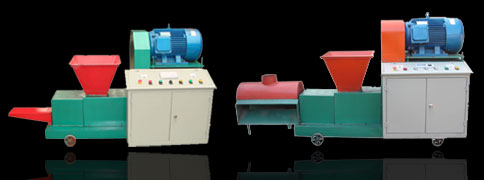Briquette is A Better Energy
Coal is a cheap fuel because of its abundant reserves, but it emits harmful gases and particulates, leaves ash when it burns, and contaminates the environment because of transportation. It is also hard to ignite as compared to gas or petrol fuels. To change coal into a clean and convenient fuel has been people's long time expectations. Briquetting is one of the approaches; the other approach is gasification that requires large scale factory, big investment and may produce secondary pollution.
Briquetting had developed into a mature technology, especially in some resources restricted but technically advanced countries such as Japan, before these countries shifted to high quality energy (oil, gas and electric). In Britain coal was widely used before smokeless zones became widespread. Now these countries no longer use it but briquetting is receiving high attention in developing countries where oil and gas are scarce and woodfuel supply diminishes. The output of briquettes has increased very fast in India, Pakistan, South Korea and particularly in China where the output has almost tripled in the nineteen eighties. The technology of coal briquetting has been developed for almost a 100 years. There are numerous useful results, but a lot of work remains to be done. Research on briquetting technology has been focused on the following:
Smokeless Combustion
If a high temperature zone can be established over the burning briquette, the volatile gas will be burnt and little smoke will come out. But this condition is difficult to achieve especially while starting the fire. The design of stove is an important factor for smokeless combustion. Here the key point is adequate air supply that should result a coefficient of surplus air around 1.1 to 1.3. Some advanced stove designs provide secondary air, ensuring complete combustion with a smaller coefficient of surplus air, so the combustion temperature can be very high. It is natural, that the less volatile matter in the coal, the less the smoke produced while burning. This is the reason why the briquette is best made of anthracite but is much less abundant than bituminous or lignite in reserves.
Engineers have tried hard to use bituminous coal to make smokeless briquette, but not satisfactorily succeeded. Carbonization is an important way to change the properties of bituminous coal to fit the requirement in making briquettes. The technology of carbonization varies with production scale: In case of small scale it creates heavy pollution to the environment; in case of large scale, the pollutants turn to be by-products but large investment is needed.
Simplification technology
The process of making briquettes usually consists of crushing, screening, mixing (with binder or adhesive) and pressing. The details of each process vary widely. For example, the pressure employed in pressing can be from 70 to 5600 kg/cm and the temperature can be from room temperature to around 500° C depending on the property of raw coal and the usage of briquettes
Reduction of cost
By changing the proportion of raw materials and simplifying technology, the cost of production can be reduced. The management of briquetting factories has also been greatly improved including appropriate location of factory, convenient way of distributing to the households and more utilization of indigenous raw materials.


